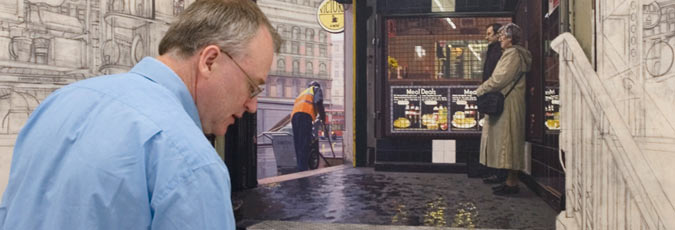To coincide with the Sainsbury Wing exhibition Venice: Canaletto and His Rivals, the National Gallery has invited artist Clive Head to show work that considers the urban landscape in Clive Head: Modern Perspectives.
Head combines site drawings, photography and studio studies to create multiple views in a single painting. His display features three paintings, exploring the experience of looking and moving around spaces in London.
About the tour
For this tour, Head has selected five National Gallery paintings. Discover the extraordinary spatial games Turner played and the Impressionist’s subversive use of photographic perspective..
Paintings in the tour
Banner image above: Detail from Clive Head working on the painting, 'Leaving the Underground', 2010. Photo © John Gibbons

